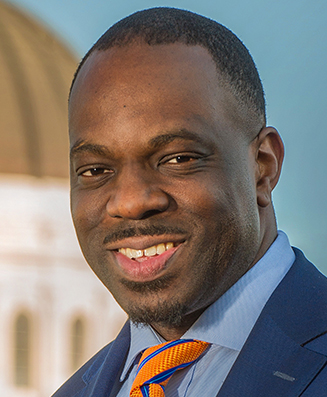Governor Newsom appointed Caltrans Director Toks Omishakin, who has helped shift Caltrans toward encouraging sustainable transportation, to head up the California State Transportation Agency, also known as CalSTA.
CalSTA was most recently led by Secretary David Kim, who stepped down in January. One of Kim's accomplishments was leading the effort to create state level guidance on aligning transportation funding with state climate goals in the Climate Action Plan for Transportation Investments (CAPTI).
Omishakin has been outspoken about the direction Caltrans was taking under his leadership. He took the job soon after Newsom vetoed Senator Scott Wiener's Complete Streets bill, which aimed to force Caltrans to consider the needs of people on foot, on bike, and on transit in addition to people in cars whenever it built or repaired transportation infrastructure. Omishakin immediately moved to a find a way to respond to what the bill called for, finding projects already in the funding pipeline that could include complete streets elements. He set aside $100 million within the State Highway Operations and Protection Program for that purpose, even though a few feathers got ruffled in the process.
Omishakin has also stated that Caltrans would no longer be supporting highway widening projects in the state - or at least, that it's headed in that direction. For example, he nixed the agency's plans for widening of the 710 freeway in Southern California – even though Caltrans had pushed that project for decades.
He more recently issued a complete streets directive that calls for every Caltrans project to incorporate the needs of all road users, by default.
Omishakin seems like the right person to head up CalSTA. He knows that the state must encourage and invest in sustainable and active transportation modes, and help reduce the amount of driving people do, and he has been outspoken about it. Under his leadership, and with his insider knowledge of the challenges faced within and by Caltrans, CalSTA can continue to guide California towards better transportation planning and funding decisions in every department.
His appointment leaves an opening at the top of Caltrans, however, and whoever fills that position is crucial if progress at Caltrans is to continue. The complete streets directive, for example, is very new, and although Omishakin also issued a list of priority actions to begin putting the directive into action, it will definitely need continued support from whoever the new Caltrans director is.
Let's hope that Governor Newsom appoints someone who can clearly see the writing on the wall - that climate, environmental justice, and sustainability are not issues that can be set aside - and who can finish the job of shifting Caltrans in the right direction.
A note about state agencies:
It can be confusing to distinguish between various state transportation agencies. Caltrans is the state's official Department of Transportation, with a fraught history as the state's highway builder. The California Transportation Commission (CTC), an appointed body, oversees and allocates state and federal funding for transportation projects built by Caltrans as well as regional and local agencies.
The California State Transportation Agency (CalSTA) oversees every state department that touches transportation, including Caltrans and the CTC, but also the DMV, the CHP, the High-Speed Rail Authority, and the Office of Traffic Safety, which manages grants to local governments, police departments, and other organizations for safety and enforcement programs.






